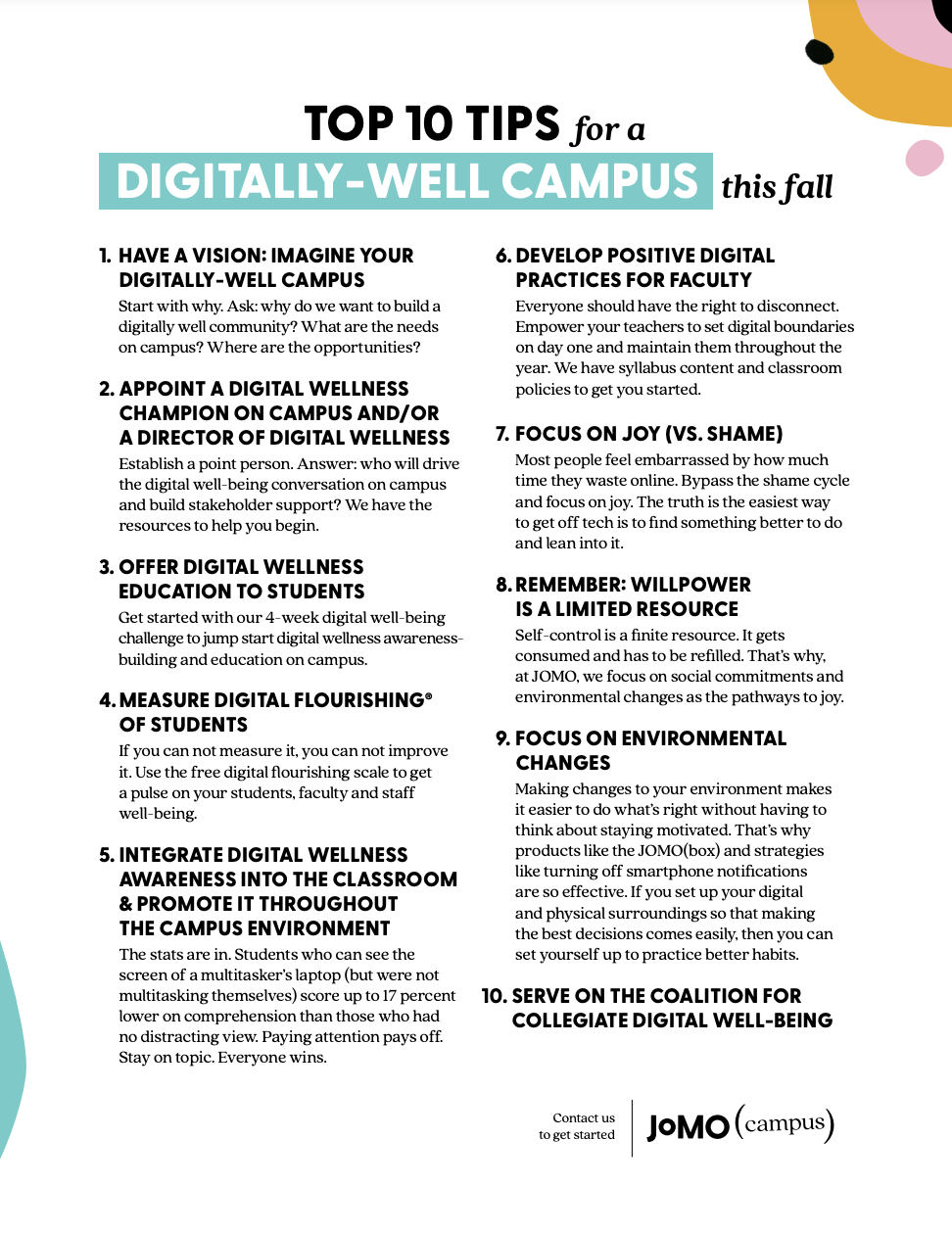10 Tips for a Digitally Well Campus
For years, consumers have been promised a simple, carefree digital future. We could live, work, learn, and play from the comforts of our homes and have whatever we desire brought to our door with the flick of a finger. Instant communication would bring us together. Technological convenience would give us more time to focus on what really mattered.
When the COVID-19 pandemic hit, that future transformed into the present, almost overnight. And the reviews aren’t great. As David Sax writes in his book, The Future is Analog, it turns out that leaving the house is underrated, instant communication spreads anger better than joy, and convenience takes away time rather than giving it to us. Oops.
For many, absorbing the world in its entirety through our screens proved entirely claustrophobic. Our eyes and heads ached from the strain of looking at these small rectangles of light for hours on end.
It was anxiety-provoking. Deadening. Boring. Antisocial.
And all of our students lived through it.
We’ve had our eyes opened. There is nothing about the future that has to be digital, and embracing the reality of human experience doesn’t mean resisting change. We are left asking: What happens to struggling students when they’re not in a classroom? If our software is built for productivity, who tends to our jobs' social and cultural aspects? Can you be educated without community?
For many people, quarantine's best - most joyful - parts during the pandemic were the least digital ones: baking bread, playing board games, and going hiking. We used our hands and hugged our children and breathed fresh air.
This suggests that if we want a healthy future, we need to choose not convenience but community, not technology but humanity.
What if we can learn from the months and years of the pandemic, not as a brief deviation from our steady march toward a promised destination but as a valuable lesson in digital technology’s limitations and the kind of future we really want?
We are at a critical juncture in the struggle for the future. On the one hand, we can continue moving forward blindly, following Silicon Valley’s imperative to create a world where digital is the driver and anything analog is disrupted out of existence. Or we can pause, absorb the hard-learned lessons of the digital immersion we experienced during the pandemic, and build a future where digital technology actually elevates the most valuable parts of the analog world rather than replacing them.*
Digital wellness is a positive state of mental, physical, and social-emotional health pursued through intentional, authentic, and balanced engagement with technology and interactive media.**
At JOMO Campus, we offer education, experiences and goods to help your students, faculty and staff embrace the best of the Internet and leave the rest behind. That’s the joy of missing out.
Let us help you bring your campus back to life.
Check our programs and start your journey toward mindful tech use today.


